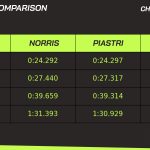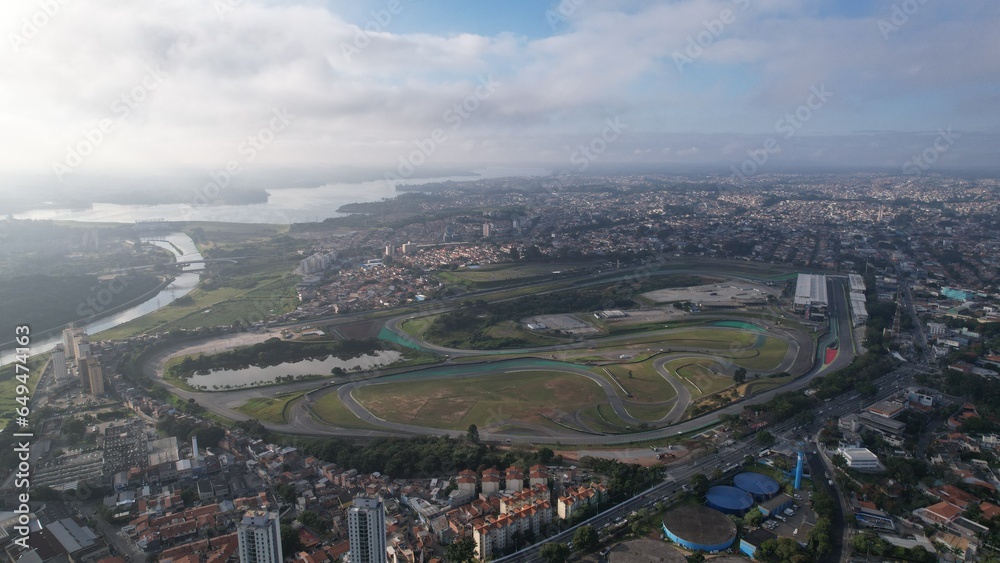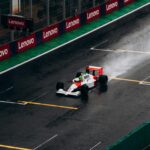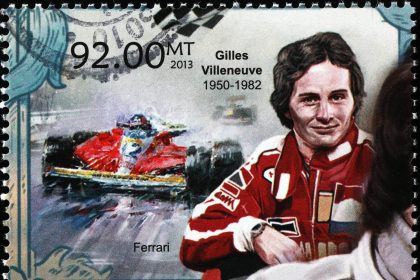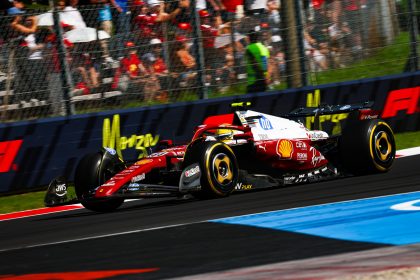There are racetracks, and then there is Interlagos. The Autódromo José Carlos Pace—known to every F1 fan simply as Interlagos—is not just a circuit. It is a living, breathing test of nerve, skill, and adaptability, a place where legends are made, hearts are broken, and the weather gods play dice with destiny. If you want to understand what makes a Formula 1 driver truly great, watch them dance with the ghosts of Senna, Massa, and Hamilton on this undulating ribbon of tarmac in São Paulo.
- The Old-School Beast: Anatomy of a Challenge
- The Senna S: Where Heroes Are Made (and Races Lost)
- The Infield: A Ballet of Balance and Bravery
- Juncao and the Uphill Charge: Where Championships Are Won
- Weather: The Great Equalizer
- The Numbers Don’t Lie: Fastest Laps and Pole Positions
- The Human Factor: Why Interlagos Still Matters
- The Modern Mastery: What It Takes in 2025
- Waste a Bit More Time
Today, as the 2025 season barrels toward its climax, the question remains as urgent as ever: What is the key to mastering Interlagos? The answer, as always, is as complex as the circuit itself.
The Old-School Beast: Anatomy of a Challenge
Interlagos is a paradox—a medium-speed circuit that feels like a street fight in a cathedral. At just 4.309 km (2.677 miles) and 15 corners, it is neither the longest nor the fastest on the calendar. But its secrets are buried in the details: the relentless elevation changes (over 40 meters from lowest to highest point), the anti-clockwise layout that punishes the neck and core, and the infamous bumps that have survived every resurfacing attempt like cockroaches after a nuclear winter.
The circuit’s technical challenges are legendary. The Senna S (Turns 1 and 2) is a downhill, off-camber chicane that demands precision braking and razor-sharp direction changes. Get it wrong, and you’re either in the wall or a sitting duck on the Reta Oposta straight. The infield section (Turns 6-10) is a carousel of camber, grip, and patience, where the car’s mechanical balance is tested to its limits. And then there’s Juncao (Turn 12), the left-hander that launches you uphill toward the finish line—a corner that has decided more championships than most drivers have had hot dinners.
As Nico Rosberg, 2016 World Champion, once said:
Interlagos is a track where you never feel comfortable. Every lap, the car wants to throw you off. You have to be aggressive, but if you overdo it, you lose everything.
Nico Rosberg
For a detailed sector-by-sector breakdown, see this excellent Brazil F1 24: Sector-by-Sector Track Guide.
The Senna S: Where Heroes Are Made (and Races Lost)
Let’s start at the beginning—literally. The Senna S is the most iconic sequence at Interlagos, and perhaps in all of Formula 1. Named after Brazil’s greatest sporting hero, it is a left-right chicane that drops steeply downhill from the start/finish straight. The braking zone is treacherous, the apexes are blind, and the exit is critical for the long drag down Reta Oposta.
This is where the bold make their mark and the timid are exposed. Overtaking here is possible, but only if you’re willing to risk everything. It’s no coincidence that some of the most dramatic moments in F1 history have happened here—think of Hamilton’s last-lap pass in 2008, or the first-lap chaos that so often shuffles the order.
As described in the Le Mans Ultimate: Interlagos Track Guide:
Heading down the start/finish straight, keep to the right hand side. Look ahead to spot your braking reference… Brake hard initially and shift down to 2nd gear. Use the trail braking technique to allow the car to rotate. Start to feed the car into the corner just after you cross under the bridge. Aim to apex the inside kerb where the green astroturf turns to grass on the inside of the kerb. Get your inside wheels onto the kerb and wait for the car to be fully rotated before getting back onto the power.
If you want to see how the pros do it, watch this iRacing F4 Interlagos Guide
The Infield: A Ballet of Balance and Bravery
After the adrenaline rush of the Senna S and the Reta Oposta, drivers plunge into the infield—a section that separates the artists from the accountants. Turns 6 (Ferradura) and 7 (Laranjinha) are medium-speed right-handers that demand commitment and a car that’s willing to rotate without snapping. The camber changes constantly, and the grip is never quite what you expect.
Then comes Pinheirinho (Turn 9) and Bico de Pato (Turn 10), two slow corners that require heavy braking and delicate throttle application. This is where rear tire wear becomes a factor, and where even the smallest mistake can cost you dearly.
As the F1 Formbook Circuit Guide notes:
The circuit has been resurfaced for 2014, but it still has a reasonably rough tarmac, coupled with an unusual number of corners with heavy longitudinal and lateral loads combined. (Those increasing radius exits from Turn 2 through Turn 3, Turn 4 through Turn 5 and Turn 12 through the last few kinks.) As a result, tyre wear is medium-high with the right-rear tyre wearing out the most during a stint.
Juncao and the Uphill Charge: Where Championships Are Won
If there is a single corner that defines Interlagos, it is Juncao. This medium-speed left-hander is the gateway to the long, uphill blast to the finish line. Get the exit right, and you’re a hero. Get it wrong, and you’ll be swallowed by the pack before you can say “caipirinha.”
The importance of Juncao cannot be overstated. It is the last real opportunity to make or lose time on a lap, and it sets up overtaking moves into Turn 1. In 2008, it was here that Lewis Hamilton found the grip to pass Timo Glock and snatch the title from Felipe Massa in the dying seconds—a moment that still haunts Brazilian fans to this day.
For a masterclass in how to attack Juncao, check out this Ferrari 296 GT3 Interlagos Track Guide & Setup
Weather: The Great Equalizer
If Interlagos wasn’t challenging enough, the weather adds another layer of unpredictability. The circuit sits in a microclimate that can turn from blazing sun to torrential rain in minutes. Some of the most memorable races in F1 history have been shaped by sudden downpours—2003’s chaos, 2012’s title-deciding drama, and Verstappen’s wet-weather heroics in 2016.
As the F1 Formbook puts it:
Those magical changeable conditions from the 2008 and 2012 title deciders might make a return here this weekend as there is a reasonable chance of rain forecasted for both Saturday’s and Sunday’s running. These two days should be relatively cool too with only 24 and 22C ambient respectively. Friday, however, looks to be a slightly different matter as it should be much warmer (31C) and precipitation might fall between the two FP sessions. Note that the notorious Interlagos microclimate means that forecasts are somewhat less predictable than usual.
The Numbers Don’t Lie: Fastest Laps and Pole Positions
Interlagos rewards the brave and the precise. The fastest pole lap in history was set by Lando Norris in 2024, with an average speed of 263 km/h—a testament to the relentless pace of modern F1 machinery. But raw speed is only part of the story. The circuit’s layout means that even the fastest car can be undone by a single mistake, a sudden rain shower, or a poorly timed safety car.
Here’s a quick look at recent pole lap times:
| Year | Driver | Pole Lap Time |
|---|---|---|
| 2024 | Lando Norris | 1:23.405 |
| 2023 | Max Verstappen | 1:10.727 |
| 2022 | Kevin Magnussen | 1:11.674 |
| 2021 | Max Verstappen | 1:08.372 |
(Source: Lewyslinks Brazil F1 24 Track Guide)
The Human Factor: Why Interlagos Still Matters
What makes Interlagos truly special is not just its layout or its history, but the way it exposes the human side of Formula 1. This is a circuit that rewards courage, punishes arrogance, and demands respect. It is a place where champions are crowned and dreams are shattered—often in the space of a single lap.
Consider the roll call of iconic moments:
- 1991: Ayrton Senna wins his home Grand Prix, stuck in sixth gear, and collapses from exhaustion—a victory for the ages.
- 2008: Lewis Hamilton overtakes Timo Glock in the final corners to win his first world title, breaking Brazilian hearts.
- 2012: Sebastian Vettel recovers from a first-lap spin to secure his third consecutive championship in a race of chaos and rain.
- 2016: Max Verstappen delivers a wet-weather masterclass, overtaking at will and announcing himself as the sport’s next superstar.
As Felipe Massa, who came so close to glory in 2008, once said:
Interlagos is my home. It’s where I learned to race, where I dreamed of being a champion. Every time I drive here, I feel the energy of the crowd, the history, the passion. It’s like nowhere else in the world.
Felipe Massa
The Modern Mastery: What It Takes in 2025
So, what does it take to master Interlagos in 2025? The fundamentals remain unchanged: precision, adaptability, and a willingness to embrace chaos. But the tools have evolved. Modern F1 cars are faster, more complex, and more sensitive to setup than ever before. Engineers must find the perfect compromise between straight-line speed and mechanical grip, while drivers must manage tire wear, fuel loads, and ever-changing weather conditions.
As always, the best drivers are those who can adapt on the fly—who can find grip where none exists, who can read the track and the sky, and who can keep their heads when all around them are losing theirs.
For a taste of how today’s drivers approach the challenge, watch How to Master the Brazil GP! | Interlagos F1 Track | Nico Rosberg
Waste a Bit More Time
If you’ve made it this far, you’re clearly as obsessed with Interlagos as I am. Here are some links to help you waste a bit more time before the next Grand Prix:
- Brazil F1 24: Sector-by-Sector Track Guide
- Le Mans Ultimate: Interlagos Track Guide
- iRacing F4 Interlagos Guide – 1:34.2 – YouTube
- Ferrari 296 GT3 Interlagos Track Guide & Setup – YouTube
- How to Master the Brazil GP! | Interlagos F1 Track | Nico Rosberg
- Interlagos – Circuit Guide | The F1 Formbook – WordPress.com





